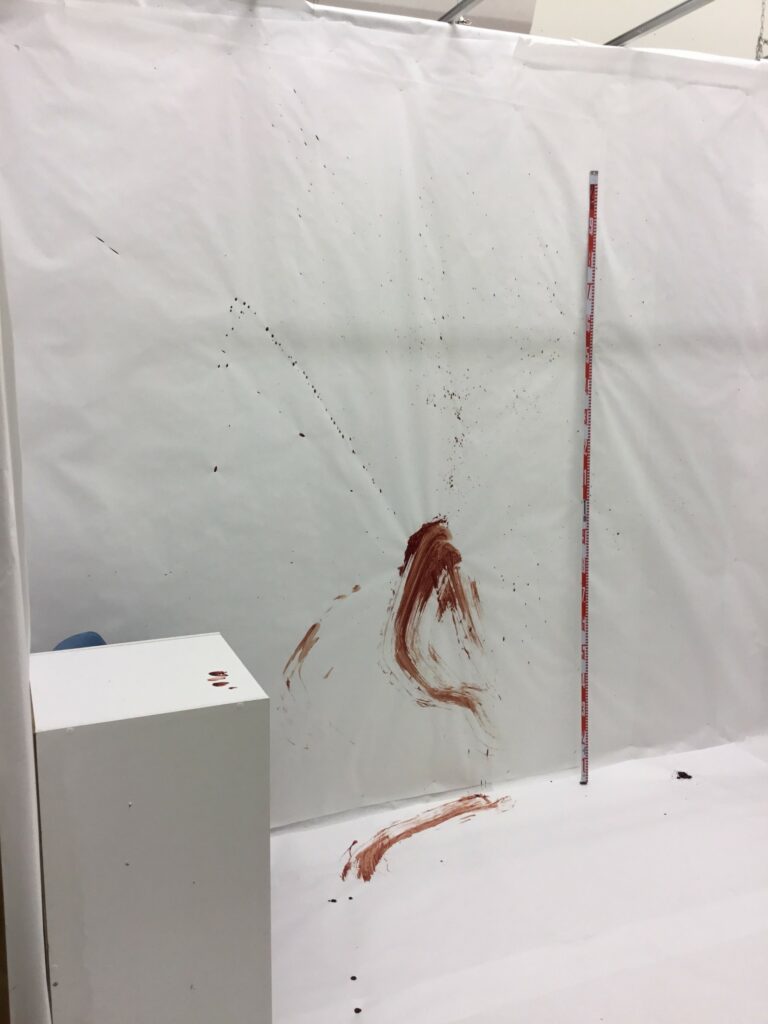Blood spatter pattern analysis is used in forensic science to figure out the cause of the blood. Spatter stains are formed from droplets of blood in flight. There are different pattern types such as cast off, expirated and impact.



The spatter is created in response to a force applied to liquid blood with the resulting pattern dominated by small circular and elliptical stains. The mechanical process of droplet formation is the same for all types which explains why some of these pattern types have overlapping characteristics, making classification ambiguous. There is currently no agreed methodology relating to what features of how many are required to enable a classification. Interpretation is left to analysts to determine based on their training and experience.

Forensic science is a “subjective” discipline which allows for wrong or erroneous interpretation. Reliability studies show some pattern types have high error rates for classification and analysts are not always consistent.

The desired outcome of this research will “result in a method for the classification of bloodstain patterns based on physical characteristics of bloodstains. Ideally, this method will lead to an objective and consistent bloodstain pattern analysis which may decrease error and increase reliability.”
Previous research focused on segmenting with colour thresholding, morphological operations and the Matlab region props method. There was some research in full automation but it was not accurate enough or tailored to specific photo conditions. There wasn’t ability to distinguish between stains and other objects and therefore it was not ready to use. There were difficulties with balancing image resolution and stain segmentation to reduce false positives and negatives. Also limited types of patterns have been analysed and a narrow range of variety within these patterns have been tested so far.
To date deep learning has had limited application to blood pattern analysis. CNNs have become the leading architecture for most image classification problems – could these be used directly on images to remove the feature extraction process?
So the research question is: Can computer-based methods particularly computer vision and machine learning techniques be applied to various stages of spatter analysis to improve both the reliability and ease at which it can be undertaken?

The project strategy includes the creation of a bloodstain pattern dataset and then the development of an automated bloodstain pattern analysis tool. Then the application of ML will be used on extracted data features from patterns. And finally the application of CNN to image classification task.


Progress so far includes 208 impact patterns, 132 cast off, 132 expirated and 60 drip patterns have been created photographed and stitched. Some statistical analysis has been undertaken on these results with variables identified for each pattern type. The other strategies have also made good progress.
Project challenges include:
•Stain size and image resolution, many small objects per image (up to 20,000 stains, many <0.5mm Ø)
•Stain segmentation – balancing false negatives vs false positives
•Fitting ellipses for irregular shaped stains/ overlapping stains
•Varied image density <1% – 30% image can be stains of interest.
•Stitched pattern images are HUGE (up to 60Mpixels) Consider alternative ways to train deep learning network



